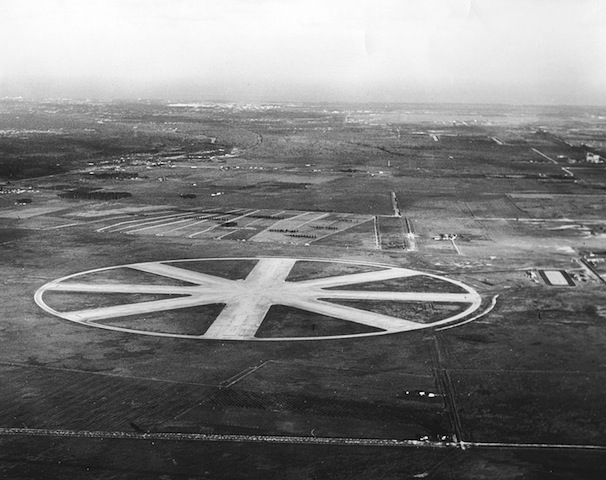Operated in 1949-50
Broward Speedway - A two-mile circle built around Forman Field in Davie…

Operated in 1949-50
Broward Speedway - A two-mile circle built around Forman Field in Davie…

What’s the big circle in the middle??
Another old long Speedway
http://www.citynmb.com/index.asp?Type=B_LIST&SEC={EAE02472-475F-463D-BBF8-B6DF1FBE20F1}
View from the crowd
Photo from Florida State Archives
View of Fulford-Miami Speedway from the crowd
This 1-1/4 mile board track was designed by Ray Harround and built for developer Carl Fisher in 1925. The AAA sanctioned race with a $30,000 purse was run before 20,000 people on February 22, 1926.* It was the world’s fastest wooden track due to the 50 degree banked turns.
Racing at Speedway
Photo from Florida State Archives
Racing at Fulford Speedway
Action on the fastest speedway in the world on February 22, 1926. Peter DePaulo driving a Duesenberg 8 leads Harry Hartz in Miller 8 as they head for the checker. DePaulo won the event and Hartz finished second.
Overlooking Speedway
Photo from Florida State Archives
Looking over Fulford Speedway from the spectator stands.
Harry Hartz in car
Photo from Florida State Archives
Harry Hartz in his race car
Harry Hartz awaits the start of the 300-miler Fulford Speedway, February 22, 1926. Hartz driving a Miller 8 finished second in the event. Hartz remained a star in INDY racing for many years.
Earl DeVore in race car
Photo from Florida State Archives
Earl DeVore in Miller special race car at the Fulford-Miami Speedway.
Ralph Hepburn at Speedway
Photo from Florida State Archives
Ralph Hepburn at Fulford Speedway
Ralph Hepburn, starting second with a time of 141.9 mph speaks with official, as the field readies for the green flag. Hepburn is in a Miller 8, 122.5 C. I. displacement. He had just turned to auto racing after a fine start in motorcycle racing. He went on to become a top flight INDY driver, dying in a crash in a Novi Racer sometime after World War II.
Advertisement
Photo from Florida State Archives
Advertisement for 300 mile race at Fulford-Miami Speedway
This was the only day races were held before the track was destroyed by a hurricane on September 17, 1926.
Official Race Starter
Photo from Florida State Archives
Barney Oldfield, official starter at the Fulford-Miami Speedway.*
He only started the one race on February 22, 1926 as the auto speedway was destroyed by a hurricane on September 17, 1926.
Remains of Speedway after hurricane
Photo from Florida State Archives
Remains of Fulford Speedway after being struck by a hurricane
Remains of the 1-1/4 mile oval after the infamous storm of Septembr 17, 1926. The track was never rebuilt. The lumber shown was used to help rebuild the city of Miami.
Remains of stands and track
Photo from Florida State Archives
Remains of stands and track
Remains of stands and track after 1926 hurricane, viewed toward turns #3 and #4. Remaining part of #3 stands.
Broward Speedway-
Was a 2 mile circular paved oval. The outer circular ring was a taxi-way, and the old airport runways were shaped like spokes in a bicycle wheel.
It only ran in 1949, sports cars, Grand Nationals, NASCAR modifieds, and strickly stocks (aka; Broward Bowl).
Interesting to read about that. Many airports were and are used for racing. Mirabel Int Airport, near Montr?al is now a motorsports facility, ICAR. Edmonton Airport in Alberta was used for Indy and Cascar(today Nascar Canadian Tire series) events. And i think there was at least one Indy race in a US Airport(Cleveland maybe) that I remember.
I think Sebring,Fl is an old airfield. Talladega Superspeedway sits on top of an old airfield, if you google-earth it, you can still see the old runways all around it.
Yep, actually part of the airport is still operational. Sebring Raceway only covers around half of the airport.